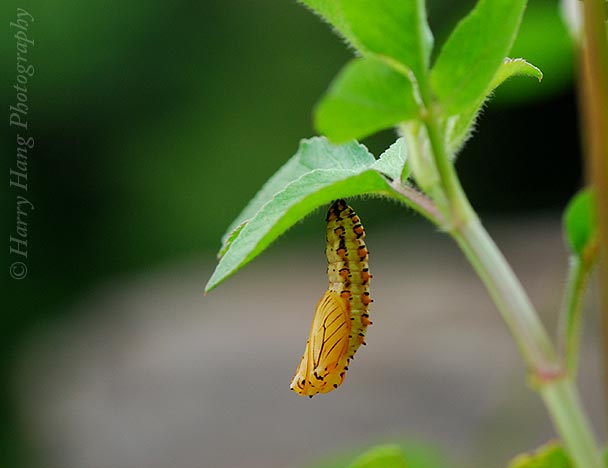 Butterfly Chrysalis
Butterfly Chrysalis Butterfly Chrysalis
Butterfly Chrysalis Butterfly Chrysalis
Butterfly Chrysalis Butterfly Chrysalis
Butterfly Chrysalis Butterfly Chrysalis
Butterfly Chrysalis Butterfly Chrysalis
Butterfly ChrysalisThe chrysalis is a perfect example of form and function. Many chrysalids of different species of butterflies reflect the habitat in which they are found. If the pupa winters over among dead brown leaves it is likely to look like or mimic a dead leaf. If the insect pupates when foliage is green it may be green or look like any number of natural objects such as bark, lichen or a leaf.
Look closely and notice the areas on the chrysalis where the anatomy of the butterfly will deveop. Notice how the butterfly form is facing downward. This is how it will emerge. Everything has its plan, beauty, purpose and function.
The pupal stage of the monarch is only about ten to fourteen days. Soon the colors will begin showing through the clear (not green) skin of the chrysalis.
About two weeks have gone by since the caterpillar turned into a chrysalis. This time of inactivity is misleading for, in reality, the inward workings within the pupa have been orchestrating the makings of the destined butterfly to come. Now new colors begin to appear as the chrysalis begins to darken.
Source lifecycle.onenessbecomesus.com






